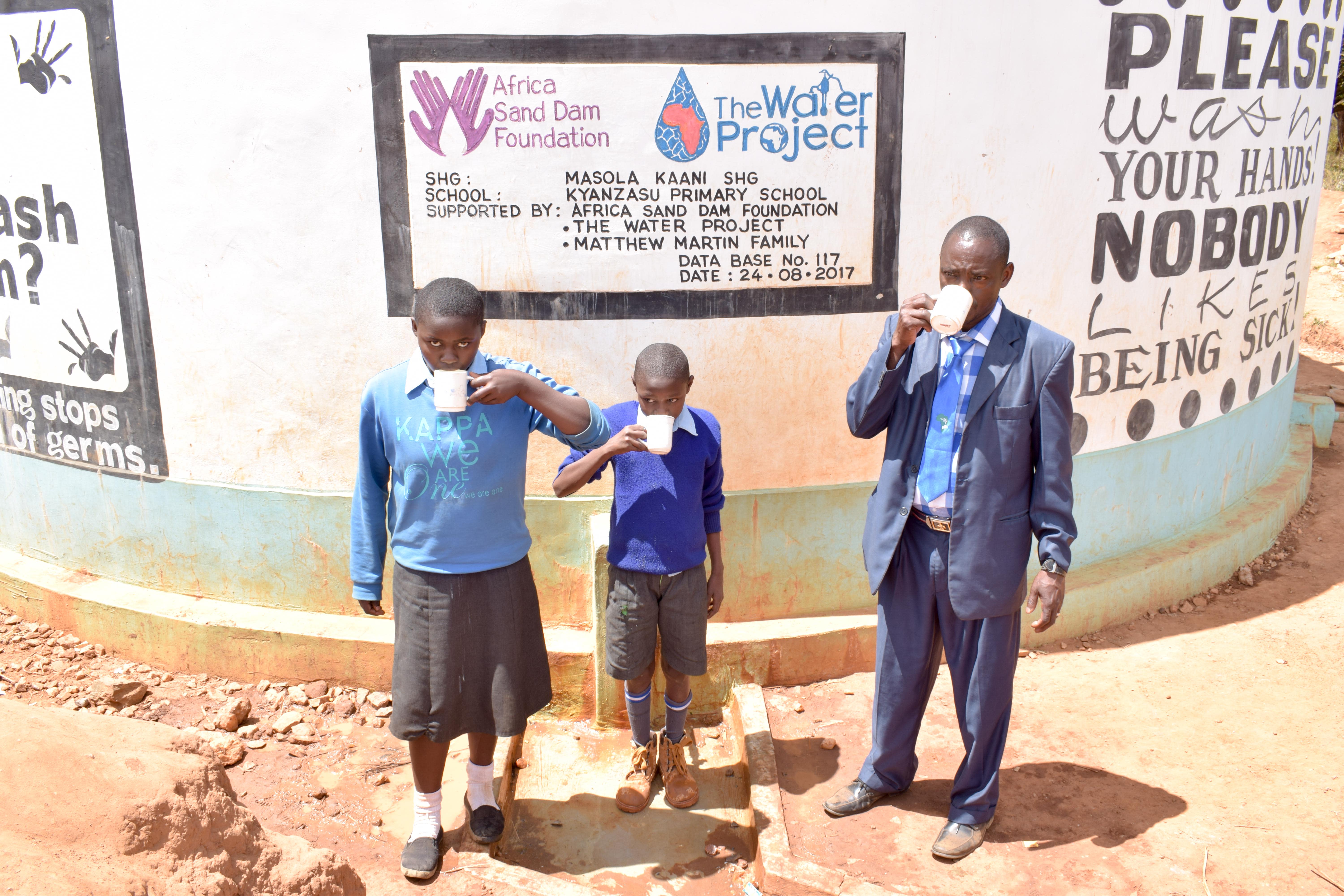This project is a part of our shared program with Africa Sand Dam Foundation. Our team is pleased to directly share the below report (edited for clarity, as needed).
Welcome to the School
Kyanzasu Primary School was started in 1961 to serve the children of Kyanzasu Village, Machakos, Kenya.
The school enjoys a close relationship with the Masola Kaani Self-Help Group, which has also been building sand dams and hand-dug wells with ASDF. Most members have children attending this school, and understand the water situation and needs at the learning facility. It is for this reason that they are committed to constructing a water tank for their children.
Water Situation
The school depends entirely on catching water in four plastic tanks: three are 10,000 liters and one is 2,300 liters. When water from the tanks is depleted, pupils are required to carry five liters of water to school in the morning. Most of these students get that water from River Ikue and the Kyanzasu earth dam.
With a daily use of more than 300 liters of water for drinking, mopping classrooms, cleaning offices, and watering trees, the school is always at a deficit. Pupils spend a lot of their time in pursuit of water. This greatly affects their academic performance as the time spent at rivers and other water sources should have been spent in class. Water carried by pupils is never treated, despite it being from untrusted sources.
14-year-old Josephat Mutinda said, "Carrying water to school has not been easy; it has been burdening owing to the average three to four kilometers traveled to school. This has led to cases of lateness, and pupils' tiredness in class. Again, the water carried by pupils is not secure for drinking - it has been a big gamble with our health."
After drinking this water, students suffer from bilharzia, ringworm, and typhoid.
Sanitation Situation
During the driest times of the year, Kyanzasu earth dam and Ikue River fully dry up, exposing the school to even more water challenges. These force students and staff to sacrifice the use of water for cleaning.
14-year-old Faith Mutua said, "Toilets and classes in this school are rarely washed. This has led to low levels of hygiene and sanitation in school, creating an unfavorable learning environment."
There are seven total latrines between boys, girls, and staff. The student latrines are usable, but beginning to fall apart and might need to be replaced soon.
Plans: Hygiene and Sanitation Training
Students and staff will be trained for one day. Those in attendance will form a school health club that will promote good hygiene and sanitation practices both at school and home. They will learn all of the steps to proper hand-washing, how to treat water, and how to keep their environment clean. The school will also be taught how to best oversee and maintain their new rainwater catchment tank and hand-washing stations.
Plans: Hand-Washing Stations
Three hand-washing stations will be delivered at the project’s completion. These are 1,000-liter plastic tanks fitted with four taps. The health club and school management will be responsible for making sure tanks are filled with water and that a cleaning agent such as soap or ash is available.
Plans: Rainwater Catchment Tank
We will build a 104,000-liter rainwater catchment tank for this school. This water will benefit the students, teachers, and supplementary staff. Parents will mobilize the materials needed for construction, such as sand and stone. They will also lend some strong arms to help with the actual construction.
The huge capacity of this tank makes the others look tiny in comparison; 104,000 liters should collect enough water to carry students through the entire dry season. As soon as the tank has time to cure, it can begin to collect rainwater for drinking, cooking and cleaning!

 Rainwater Catchment
Rainwater Catchment
 Rehabilitation Project
Rehabilitation Project































